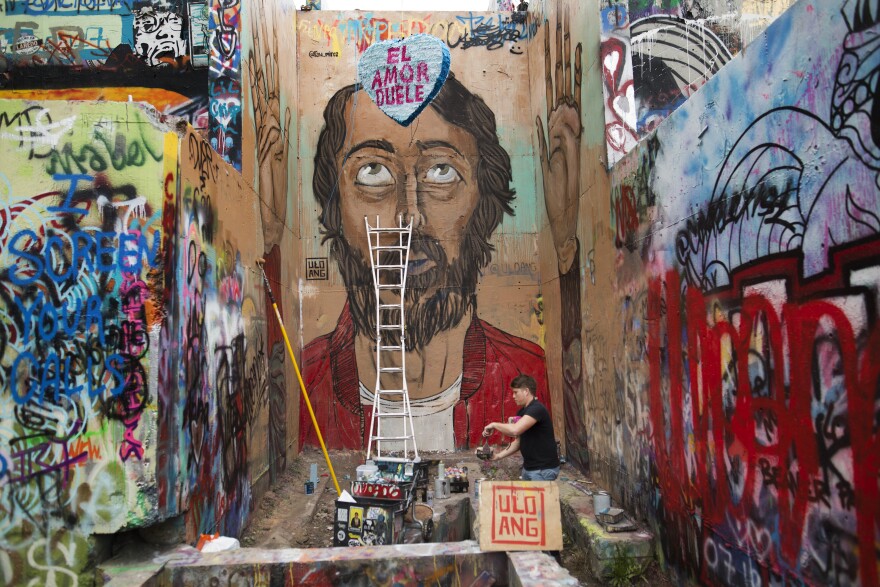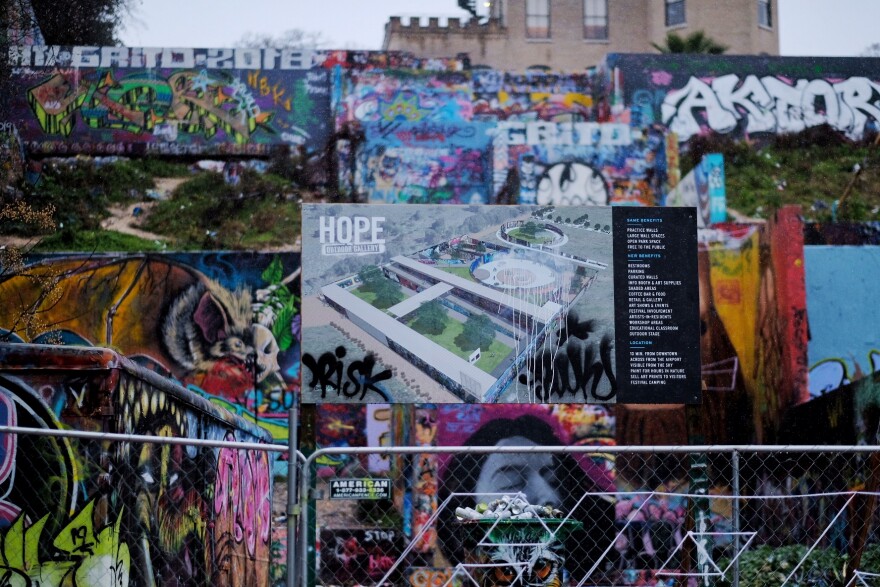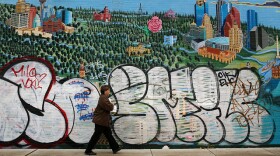When street artist and muralist Luis Angulo first sprayed paint on the concrete walls of the HOPE Outdoor Gallery six years ago, he thought he was doing something illegal. He couldn’t believe there was a space like Graffiti Park where people could come and paint whatever they wanted.
The spot quickly became one of Angulo’s favorite places to try out new ideas.
Ever since he found out the park would be torn down, he has tried to make the most of his time left. The spot's last official day is today; then the park will turn into residential buildings.

Dorothy Molencupp, who was spray-painting "thank you" on one of the walls, said it was appropriate that today was rainy and cold.
"I think that's the way a lot of us feel about it shutting down," the long-time visitor said. "It's sad. It feels like a piece of Austin is going away forever."
But Graffiti Park won’t be gone for good.
HOPE is planning to open a new location this year near the airport at Carson Creek Ranch. One of the walls from the original location will be moved to the new space.
Angulo says this change will probably result in fewer visitors because of the distance, but he still plans to go out to paint.
“The new Graffiti Park is gonna be great, and I’m really excited about it,” Angulo said, “but the HOPE Outdoor Gallery, where it is now, is unique and it can’t be replicated really, so I’m trying to get out there as much as possible.”

The new park will include parking, bathrooms, a cafe and art classes – things the current location doesn’t have. The original location does, however, have fame. For the past seven years, the park’s brightly painted walls have made it an Austin icon, which HOPE co-founder Andi Scull Cheatham and her team never saw coming.
“It was always meant to be a temporary project,” she said. “None of us imagined that it would become so well-loved and so iconic that it would then later need a permanent home.”
The land was first developed into condos in the ’80s, but a string of lawsuits over structural deficiencies caused demolition of the building in the ’90s, leaving the concrete walls we see today. A private investment firm bought the land, and in 2010 HOPE approached the owners with the idea of turning the walls into a short-term outdoor gallery, which launched at South by Southwest in 2011.

Scull Cheatham said the park saw between 50 and 200 visitors an hour because of its central location. The heavy foot traffic contributed to deterioration of the gallery, she said; the new location will be more controlled and cleaner for visitors.
“For us to preserve the icon and elevate it and add another thing that makes Austin unique — it’s super exciting,” she said. “So there’s really nothing that anyone should be worried about. I mean, honestly, getting away from the downtown location is the biggest benefit to this project, period.”

Others aren’t so sure.
Tami Vanderwilt has lived in Austin for nearly 40 years and frequently passes by the park, but she had never actually visited it. Last spring, she made a point to visit before it’s torn down.
“To me it’s a small little slice of Austin in that it’s colorful, it’s just playful, it’s whimsical, it’s sort of rule-breaking somehow in a way,” she said.
But Vanderwilt said she wonders if the new park will be as successful in capturing that essence.
“When it moves, will it be the same?” she said. “If they try to re-create it, will it still have the same vibe that it has? I don’t know.”
KUT's Sangita Menon contributed to this piece.





